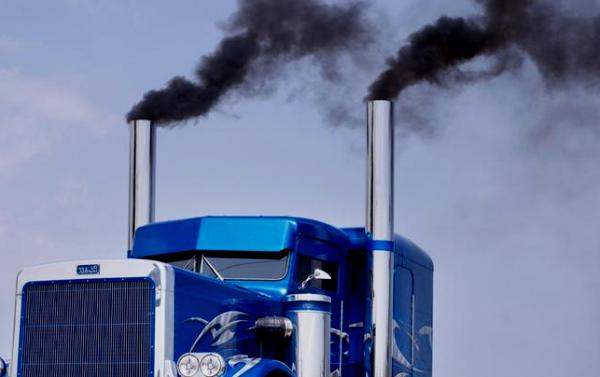CEO of $700 Million Mega-Polluter: “Our Goose Was Cooked Until President Trump and Scott Pruitt Came To Town.”

Known as “gliders,” these trucks emit particulates and nitrogen oxide at levels that are 43 to 55 times higher than those from trucks in compliance with today’s emissions standards. Even some former EPA officials refer to these as “super polluting trucks.”
What this translates into, of course, is human suffering and the loss of life. Each fleet of 1,000 gliders results in the premature death of 160 people due to air pollution.
As chronicled in the article linked above, legal action from Environmental Defense Fund, the Center for Biological Diversity, and the Sierra Club ultimately won the day, though the whole sordid tale is a good reminder of the intention of the Trump administration when it comes to the environment. These people are not your friends.

Craig,
The issue isn’t as simple as you and the Sierra Club would portray.
The “glider truck” industry was brought into being due to the rigid and precipitate actions of the Obama EPA.
Large diesel heavy haulage engines create pollution and that’s always been a factor in heavy haulage. The problem isn’t just one of cost, but technology. The EPA regulations were driven by unrealistic expectations and objectives. It proved impossible for the industry to meet the compliance schedule imposed by an over idealistic EPA.
Truck manufacturers told the Obama administration Clean Air Act contained regulations impossible to meet within such an unrealistic timeline. The Obama administration rejected this advice, instead relying on expert advice from academics with no piratical knowledge.
The result was an unmitigated disaster for the manufacturers, fleet owners, owner-operators, the US economy, and the US consumer.
The untested, hastily designed anti-pollution devices included with new models, created a price rise of $15,000 on new vehicles also a 28-30 % increase in fuel costs. Such an impost proved disastrous for small fleets and owner operators.
Given a realistic time schedule the industry could probably have absorbed these costs, but the true scale of the disaster wrought by the EPA’s miscalculation, only became apparent when a 2012-3 study revealed the full extent of woes caused by forcing the introduction of immature technology.
Class 8 trucks built during 2012-3 year production experienced repair rates 50% or more !
These new anti-pollution devices fitted to these vehicles (regardless of make)proved so troublesome half of all 2012-3 new trucks suffered breakdowns and downtime during the first year of service, while the other half still needed excessive maintenance and reported poor performance and excessive wear and aging.
Repairing emission systems costs upwards of $20,000, and some vehicles need two or three major repairs per year.=. Emission system faults often causes damage to other components while down time, breakdown salvage and schedule penalties create massive economic damage to the national economy.
Many smaller operators went bankrupt, while others even committed suicide.
Even if truck operators didn’t suffer major malfunctions, the constant maintenance required nickel-and-dimed many into poverty.
The study identified the primary cause of breakdowns related to the new emission-reduced engines and surrounding ‘plumbing’. This was entirely predictable and the warning ignored by the Obama administration. .
As a method of avoiding these disasters, the operators sought a solution from “glider builders” who offered a method of building a new trucks, but with an old reliable, reconditioned,pre-clean air act engine.
Naturally, this hurt sales of new vehicles already suffering from the excessive warranty claims and finding new sales difficult.
Not good for the industry, not good for the environment, but essential for many operators.
The “glider” truck industry would never have come into being, were it not for the heavy handed and unrealistic policies of the Obama EPA.
The answer is better technology, not more stringent regulations. The US Court of Appeals will reverse the lower courts temporary ruling, but the damage is already done. Stubbornly insisting on a bad regulation, doesn’t solve anything. It’s just more bloody-minded political point scoring.
Better, more realistic consultation between the industry, EPA and Administration is what’s needed, not more lawyers !
A few years ago, I listened Sierra Magazine editorial board member, Austin Price, confidently announced “all heavy vehicles in North America would be electric by 2025, if only Exxon can be stopped from interfering !”
When asked about the technical feasibility of that claim, he refused to elaborate.
Identifying a problem is the easy part ! Inventing a solution is far more difficult, often requiring lengthy multi-discipline research and development.
Trying enforce unrealistic laws and regulations only compounds the problem, making practical solutions more difficult.